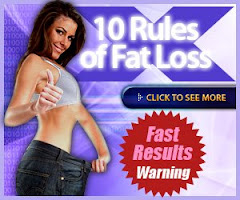
When Mike turned 65, he was 25 pounds overweight. By strict dieting, he shed the extra pounds, but he lost more weight; he also lost his energy and vitality. He was always exhausted, and his friends, seeing his gaunt, drawn face, worried about his health.
By the time volunteered for a particular fitness program two years later, he had put 25 extra pounds back on. After 6 months of exercise and some willpower at the dinner table, Mike slimmed down again. This time he felt better than he ever had, brimming with energy and glowing with good health.
What made the difference? The first time Mike lost weight; the second time he lost fat. The distinction is important. According to research, a large portion of the weight lost by dieting alone is active tissue, such as muscle and connective tissue, while a smaller fraction is excess fat. Exercise has the opposite effect. It increased his lean body mass and decreased his excess fat.
Same thing goes with cellulite. Most people tend to think that cellulites are only present to people who are obese. That is why they sometimes associate cellulite with fats and obesity.
Actually, even if cellulite refers to the chain of wrinkled “fat cells” and “subcutaneous connective tissues” beneath the layer of the skin, it should never be associated with people who are fat or obese. In fact, there are many people who have cellulite but are not fat at all.
In reality, nobody knows the main reason why some people accumulate cellulite. However, there are some factors that health experts are considering such as the structure of the fat cells or the poison that entered the body. Some experts say it may be caused by some hormonal changes in the body. But none of these things has been proven to cause cellulites.
However, the only main reason why most of the cellulite cases are abundant in women is that the connective tissues of women are more rigid and firm than men. Hence, whenever a woman gets fat, the fatty cells tend to swell and get bigger. It creates a protruding appearance to the skin producing an “orange peel” look.
For this reason, women are more prone to cellulite than men. That is why it is important for women to be more careful on their body as they have higher chances of accumulating cellulite.
Fats and Cellulite
With the many cases of obese people having cellulites in their body, most of them believed that their cellulites are caused by being too fat.
Even though not all those who are obese develop cellulites, being overweight can really trigger the development of cellulites. This is because too much fat under the skin tend to push the connective tissue creating a strain on the skin. Thus, cellulites form.
However, this is still dependent on the structure of the cells. If an individual’s cell structure does not inhibit the tendency to bulge or expand even if fat deposits accumulate, then there will be no cellulites.
So, the most important thing to remember here is to keep those connective tissues firm and strong and avoid accumulating excess fats so as to avoid the development of cellulite.
How? Start an exercise routine program.
Transforming food into fat seems all too easy for most of us. Losing fat is far more difficult, and to accomplish this, we have only three alternatives: (1) decrease food intake and keep activity constant; (2) increase activity and keep food intake constant; or (3) combine both approaches: diet and exercise.
Physical activity can help reverse the results of inactivity. An hour of vigorous exercise burns up 300 to 600 calories. If you also cut 300 to 500 calories from your daily menu, you can also lose weight at the rate of one to two pounds a week.
Without exercise, you would have to eat 500 to 1,000 fewer calories a day to lose the same number of pounds in a week. Exercise is not for everyone who is over-fat, however. The severely obese person should exercise only under medical supervision to prevent strain on the cardiovascular system and connective tissue. And no one should restrict food intake drastically without consulting doctor.
Resorting to this kind of activity will only get the matter worse. Remember what happened to Mike? He thought that when he started dieting, he would eventually lose all the excess fats he has accumulated. The problem is that he lost those connective tissues rather than excess fat.
For people who are prone to cellulites, this will be a greater problem. Losing connective tissues instead of fat by strict dieting can only make the skin more prone to greater problems but the fat cells are still there. That only means that the problem is not solved at all.
Hence, if you wish to loose those cellulites, it would be better to loose those fats first. The idea here is to burn those fats by increasing your metabolism by 7.5% to 28% more than your normal rate.
It is for this reason that exercising is an important factor in losing cellulite. So for a more cellulite free body, always engage in an exercise routine.











